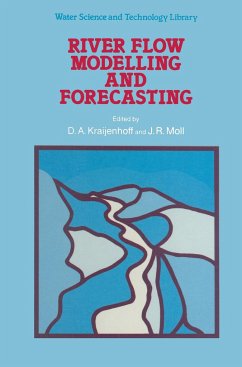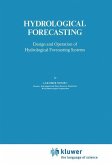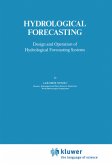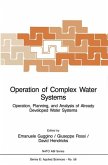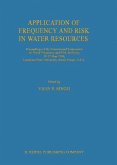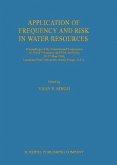`River flow modelling and forecasting are understood in a very broad sense. No other single volume known to the reviewers gives such a comprehensive coverage of different aspects relevant to the subject.' -- Journal of Hydrological Sciences, 1987
Advances in computer technology, in the technology of communication and in mathematical modelling of processes in the hydrological cycle have recently improved our potential to protect ourselves against damage through floods and droughts and to control quantities and qualities in our water systems. This development was demonstrated in a 1983 post-experience course at Wageningen University where an international group of experts reviewed successful modelling techniques and described the design and operation of a number of forecasting and control systems in drainage basins and river reaches of various sizes and under various geographical and climat ological conditions. A special effort was made to bridge the gap between theory and practice; case studies showed that each forecasting system was designed to meet a set of specific requirements and they illustrated that the forecasting system can only be expected to operate reliably if, on the one hand, it is based on sound theoretical concepts and methods and if, on the other hand, it is robust so that, also under adverse conditions, it will continue to collect and process the necessary input data and produce correct and timely signals. We were pleased to meet with encouragement for preserving the course material and making it available to a wider public. This was effected by the team of authorf who elaborated, updated and harmonized the materia in two stages; first into an issue of our university department and finally into the manuscript of this book.
Hinweis: Dieser Artikel kann nur an eine deutsche Lieferadresse ausgeliefert werden.
Advances in computer technology, in the technology of communication and in mathematical modelling of processes in the hydrological cycle have recently improved our potential to protect ourselves against damage through floods and droughts and to control quantities and qualities in our water systems. This development was demonstrated in a 1983 post-experience course at Wageningen University where an international group of experts reviewed successful modelling techniques and described the design and operation of a number of forecasting and control systems in drainage basins and river reaches of various sizes and under various geographical and climat ological conditions. A special effort was made to bridge the gap between theory and practice; case studies showed that each forecasting system was designed to meet a set of specific requirements and they illustrated that the forecasting system can only be expected to operate reliably if, on the one hand, it is based on sound theoretical concepts and methods and if, on the other hand, it is robust so that, also under adverse conditions, it will continue to collect and process the necessary input data and produce correct and timely signals. We were pleased to meet with encouragement for preserving the course material and making it available to a wider public. This was effected by the team of authorf who elaborated, updated and harmonized the materia in two stages; first into an issue of our university department and finally into the manuscript of this book.
Hinweis: Dieser Artikel kann nur an eine deutsche Lieferadresse ausgeliefert werden.
`River flow modelling and forecasting are understood in a very broad sense. No other single volume known to the reviewers gives such a comprehensive coverage of different aspects relevant to the subject.'
Journal of Hydrological Sciences, 1987
Journal of Hydrological Sciences, 1987
`River flow modelling and forecasting are understood in a very broad sense. No other single volume known to the reviewers gives such a comprehensive coverage of different aspects relevant to the subject.'
Journal of Hydrological Sciences, 1987
Journal of Hydrological Sciences, 1987

